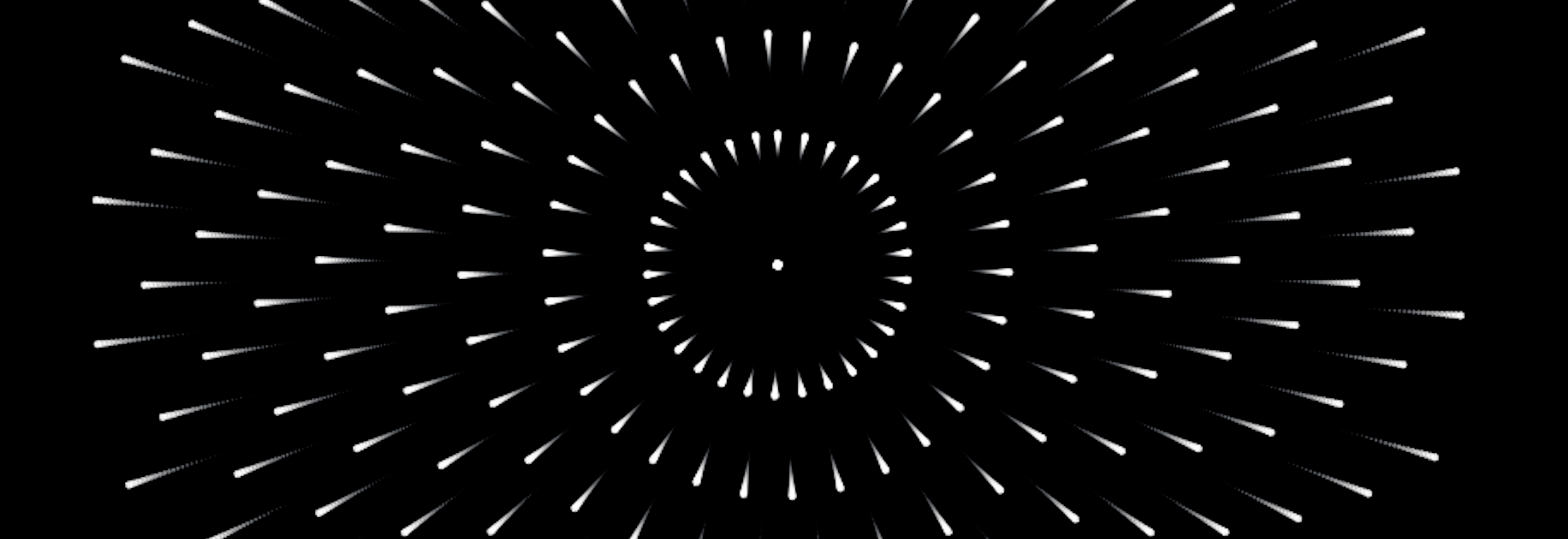read.so
Read tables from Stack Overflow questions into R
For further information including complete documentation, see read.so’s full website.
read.so
Installation
read.so is not on CRAN, but you can install it with
# install.packages("devtools")
devtools::install_github("alistaire47/read.so")Read Tables from Stack Overflow Questions into R
Sometimes you see a really interesting question on Stack Overflow, but the asker only presents the data as a presentation-style table instead of as runnable R code. Fear no more! read.so will read even heinous tables into a data frame in a trice.
Read data frame print output back a data frame
For instance, should you want to return output copied from the R console back
into your own session, use read.so for a data.frame, and read_so for a
tibble. Pass in a filepath, a raw string of text, a vector of lines, or if the
data is on the clipboard, nothing at all, and the functions will grab it for
you:
library(read.so)
iris_lines <- capture.output(head(iris))
iris_lines
#> [1] " Sepal.Length Sepal.Width Petal.Length Petal.Width Species"
#> [2] "1 5.1 3.5 1.4 0.2 setosa"
#> [3] "2 4.9 3.0 1.4 0.2 setosa"
#> [4] "3 4.7 3.2 1.3 0.2 setosa"
#> [5] "4 4.6 3.1 1.5 0.2 setosa"
#> [6] "5 5.0 3.6 1.4 0.2 setosa"
#> [7] "6 5.4 3.9 1.7 0.4 setosa"
read.so(iris_lines)
#> Sepal.Length Sepal.Width Petal.Length Petal.Width Species
#> 1 5.1 3.5 1.4 0.2 setosa
#> 2 4.9 3.0 1.4 0.2 setosa
#> 3 4.7 3.2 1.3 0.2 setosa
#> 4 4.6 3.1 1.5 0.2 setosa
#> 5 5.0 3.6 1.4 0.2 setosa
#> 6 5.4 3.9 1.7 0.4 setosa
read_so(iris_lines)
#> # A tibble: 6 x 5
#> Sepal.Length Sepal.Width Petal.Length Petal.Width Species
#> <dbl> <dbl> <dbl> <dbl> <chr>
#> 1 5.10 3.50 1.40 0.200 setosa
#> 2 4.90 3.00 1.40 0.200 setosa
#> 3 4.70 3.20 1.30 0.200 setosa
#> 4 4.60 3.10 1.50 0.200 setosa
#> 5 5.00 3.60 1.40 0.200 setosa
#> 6 5.40 3.90 1.70 0.400 setosa
clipr::write_clip(head(iris))
read.so()
#> Sepal.Length Sepal.Width Petal.Length Petal.Width Species
#> 1 5.1 3.5 1.4 0.2 setosa
#> 2 4.9 3.0 1.4 0.2 setosa
#> 3 4.7 3.2 1.3 0.2 setosa
#> 4 4.6 3.1 1.5 0.2 setosa
#> 5 5.0 3.6 1.4 0.2 setosa
#> 6 5.4 3.9 1.7 0.4 setosaFurther, read_so will attempt to read in the results of printing a tibble:
mtcars_lines <- capture.output(tibble::as_tibble(mtcars))
mtcars_lines
#> [1] "# A tibble: 32 x 11"
#> [2] " mpg cyl disp hp drat wt qsec vs am gear carb"
#> [3] " * <dbl> <dbl> <dbl> <dbl> <dbl> <dbl> <dbl> <dbl> <dbl> <dbl> <dbl>"
#> [4] " 1 21.0 6. 160. 110. 3.90 2.62 16.5 0. 1. 4. 4."
#> [5] " 2 21.0 6. 160. 110. 3.90 2.88 17.0 0. 1. 4. 4."
#> [6] " 3 22.8 4. 108. 93. 3.85 2.32 18.6 1. 1. 4. 1."
#> [7] " 4 21.4 6. 258. 110. 3.08 3.22 19.4 1. 0. 3. 1."
#> [8] " 5 18.7 8. 360. 175. 3.15 3.44 17.0 0. 0. 3. 2."
#> [9] " 6 18.1 6. 225. 105. 2.76 3.46 20.2 1. 0. 3. 1."
#> [10] " 7 14.3 8. 360. 245. 3.21 3.57 15.8 0. 0. 3. 4."
#> [11] " 8 24.4 4. 147. 62. 3.69 3.19 20.0 1. 0. 4. 2."
#> [12] " 9 22.8 4. 141. 95. 3.92 3.15 22.9 1. 0. 4. 2."
#> [13] "10 19.2 6. 168. 123. 3.92 3.44 18.3 1. 0. 4. 4."
#> [14] "# ... with 22 more rows"
read_so(mtcars_lines)
#> # A tibble: 10 x 11
#> mpg cyl disp hp drat wt qsec vs am gear carb
#> <dbl> <dbl> <dbl> <dbl> <dbl> <dbl> <dbl> <dbl> <dbl> <dbl> <dbl>
#> 1 21.0 6. 160. 110. 3.90 2.62 16.5 0. 1. 4. 4.
#> 2 21.0 6. 160. 110. 3.90 2.88 17.0 0. 1. 4. 4.
#> 3 22.8 4. 108. 93. 3.85 2.32 18.6 1. 1. 4. 1.
#> 4 21.4 6. 258. 110. 3.08 3.22 19.4 1. 0. 3. 1.
#> 5 18.7 8. 360. 175. 3.15 3.44 17.0 0. 0. 3. 2.
#> 6 18.1 6. 225. 105. 2.76 3.46 20.2 1. 0. 3. 1.
#> 7 14.3 8. 360. 245. 3.21 3.57 15.8 0. 0. 3. 4.
#> 8 24.4 4. 147. 62. 3.69 3.19 20.0 1. 0. 4. 2.
#> 9 22.8 4. 141. 95. 3.92 3.15 22.9 1. 0. 4. 2.
#> 10 19.2 6. 168. 123. 3.92 3.44 18.3 1. 0. 4. 4.Read Markdown tables into data frames
When you need to read Markdown tables into R, read.so has you covered
with read.md and read_md:
chick_lines <- capture.output(
knitr::kable(head(ChickWeight), format = "markdown")
)
cat(chick_lines, sep = "\n")
#>
#>
#> | weight| Time|Chick |Diet |
#> |------:|----:|:-----|:----|
#> | 42| 0|1 |1 |
#> | 51| 2|1 |1 |
#> | 59| 4|1 |1 |
#> | 64| 6|1 |1 |
#> | 76| 8|1 |1 |
#> | 93| 10|1 |1 |
read.md(chick_lines)
#> weight Time Chick Diet
#> 1 42 0 1 1
#> 2 51 2 1 1
#> 3 59 4 1 1
#> 4 64 6 1 1
#> 5 76 8 1 1
#> 6 93 10 1 1
read_md(chick_lines)
#> # A tibble: 6 x 4
#> weight Time Chick Diet
#> <dbl> <dbl> <dbl> <dbl>
#> 1 42. 0. 1. 1.
#> 2 51. 2. 1. 1.
#> 3 59. 4. 1. 1.
#> 4 64. 6. 1. 1.
#> 5 76. 8. 1. 1.
#> 6 93. 10. 1. 1.They can handle a number of formats, including tables with delimiter rows composed of “-”, “=”, “+”, and whitespace.
Read str results back into a data frame
If all you have is the results of calling str on a data frame, read.str
will read as many complete rows as possible into a new data frame of the same
class as the original:
warp_lines <- capture.output(str(warpbreaks))
warp_lines
#> [1] "'data.frame':\t54 obs. of 3 variables:"
#> [2] " $ breaks : num 26 30 54 25 70 52 51 26 67 18 ..."
#> [3] " $ wool : Factor w/ 2 levels \"A\",\"B\": 1 1 1 1 1 1 1 1 1 1 ..."
#> [4] " $ tension: Factor w/ 3 levels \"L\",\"M\",\"H\": 1 1 1 1 1 1 1 1 1 2 ..."
read.str(warp_lines)
#> breaks wool tension
#> 1 26 A L
#> 2 30 A L
#> 3 54 A L
#> 4 25 A L
#> 5 70 A L
#> 6 52 A L
#> 7 51 A L
#> 8 26 A L
#> 9 67 A L
#> 10 18 A MRead tibble::glimpse results back into a data frame
Similarly, if the data was printed by tibble::glimpse, try read.glimpse
or read_glimpse:
states <- data.frame(state.name, state.abb, state.region, state.division,
state.area, center = state.center, state.x77)
states_lines <- capture.output(tibble::glimpse(states))
states_lines
#> [1] "Observations: 50"
#> [2] "Variables: 15"
#> [3] "$ state.name <fct> Alabama, Alaska, Arizona, Arkansas, California,..."
#> [4] "$ state.abb <fct> AL, AK, AZ, AR, CA, CO, CT, DE, FL, GA, HI, ID,..."
#> [5] "$ state.region <fct> South, West, West, South, West, West, Northeast..."
#> [6] "$ state.division <fct> East South Central, Pacific, Mountain, West Sou..."
#> [7] "$ state.area <dbl> 51609, 589757, 113909, 53104, 158693, 104247, 5..."
#> [8] "$ center.x <dbl> -86.7509, -127.2500, -111.6250, -92.2992, -119...."
#> [9] "$ center.y <dbl> 32.5901, 49.2500, 34.2192, 34.7336, 36.5341, 38..."
#> [10] "$ Population <dbl> 3615, 365, 2212, 2110, 21198, 2541, 3100, 579, ..."
#> [11] "$ Income <dbl> 3624, 6315, 4530, 3378, 5114, 4884, 5348, 4809,..."
#> [12] "$ Illiteracy <dbl> 2.1, 1.5, 1.8, 1.9, 1.1, 0.7, 1.1, 0.9, 1.3, 2...."
#> [13] "$ Life.Exp <dbl> 69.05, 69.31, 70.55, 70.66, 71.71, 72.06, 72.48..."
#> [14] "$ Murder <dbl> 15.1, 11.3, 7.8, 10.1, 10.3, 6.8, 3.1, 6.2, 10...."
#> [15] "$ HS.Grad <dbl> 41.3, 66.7, 58.1, 39.9, 62.6, 63.9, 56.0, 54.6,..."
#> [16] "$ Frost <dbl> 20, 152, 15, 65, 20, 166, 139, 103, 11, 60, 0, ..."
#> [17] "$ Area <dbl> 50708, 566432, 113417, 51945, 156361, 103766, 4..."
read_glimpse(states_lines)
#> # A tibble: 4 x 15
#> state.name state.abb state.region state.division state.area center.x
#> * <fct> <fct> <fct> <fct> <dbl> <dbl>
#> 1 Alabama AL South East South Central 51609. -86.8
#> 2 Alaska AK West Pacific 589757. -127.
#> 3 Arizona AZ West Mountain 113909. -112.
#> 4 Arkansas AR South West Sou... 53104. -92.3
#> # ... with 9 more variables: center.y <dbl>, Population <dbl>,
#> # Income <dbl>, Illiteracy <dbl>, Life.Exp <dbl>, Murder <dbl>,
#> # HS.Grad <dbl>, Frost <dbl>, Area <dbl>



Share this post